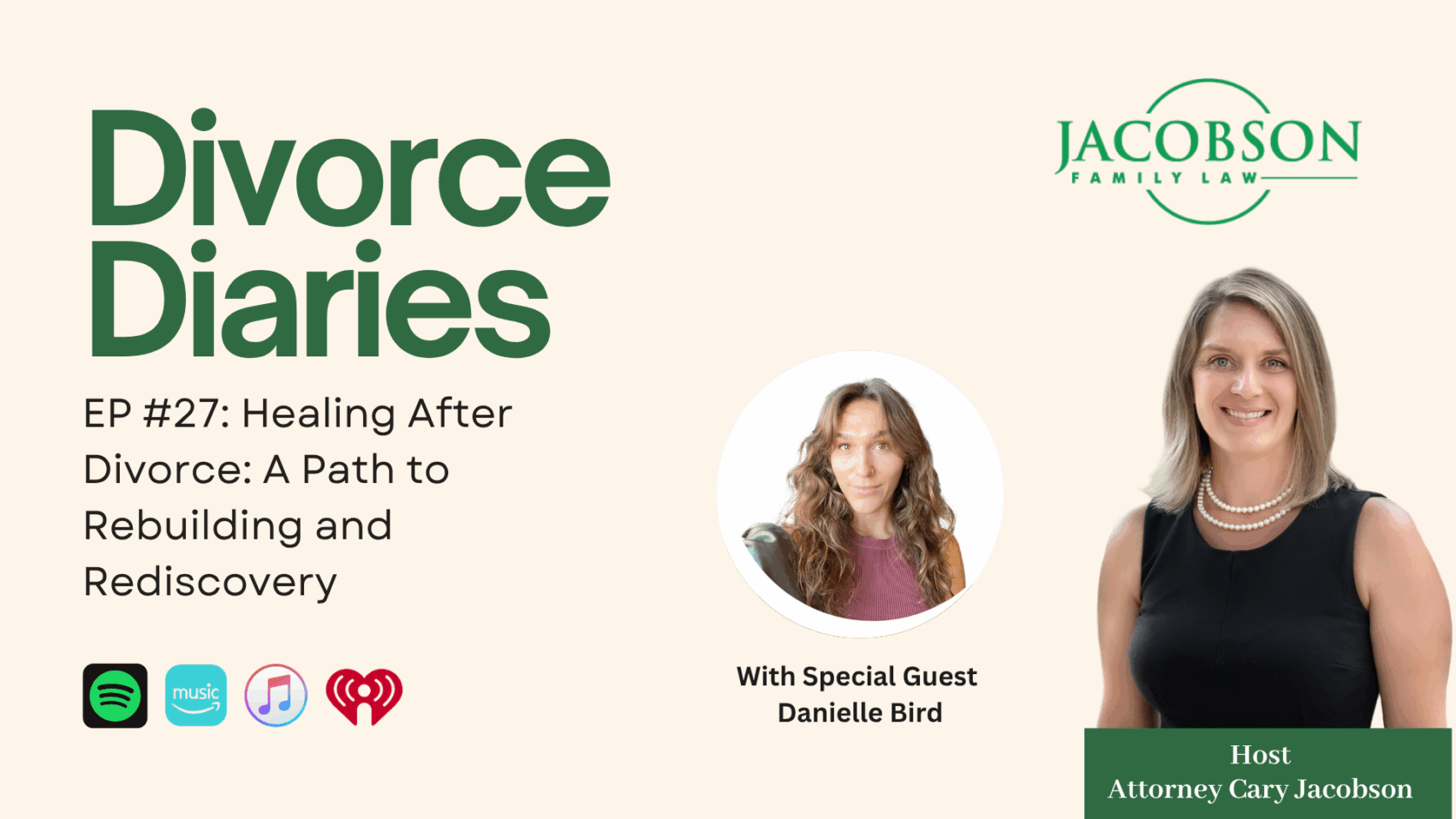
Divorce can bring unexpected emotional challenges to the surface—feelings that may have been buried for years often reemerge when a marriage ends. In episode 27 of Divorce Diaries: Lessons from the Trenches, host Cary Jacobson, attorney and mediator with Jacobson Family Law, is joined by Danielle Bird, a Complex Trauma Recovery Coach. Together they explore these challenges and provide insight into healing. Danielle discusses insecure attachment, how it impacts relationships, and ways to rewire old emotional patterns.
What Is Insecure Attachment?
Attachment styles develop early in childhood, often before we are even able to consciously form memories. These patterns—shaped by how caregivers responded to our needs—can carry into adulthood and influence romantic relationships, friendships, and even how we relate to ourselves.
When a major life event like divorce occurs, these attachment patterns often resurface. Feelings of abandonment, fear, or emotional shutdown can emerge, sometimes mistaken for personality traits rather than unresolved wounds. Understanding these patterns is the first step in healing.
Types of Insecure Attachment
There are several primary insecure attachment styles that manifest in relationships:
- Anxious-Preoccupied Attachment
Characterized by a fear of abandonment and a strong need for closeness. Individuals may become hypervigilant in relationships, seeking constant reassurance and losing a sense of self in the process. - Dismissive-Avoidant Attachment
Marked by emotional distance and discomfort with intimacy. This style often develops from early emotional neglect and may lead individuals to withdraw during conflict. - Fearful-Avoidant (Disorganized) Attachment
A combination of both anxious and avoidant tendencies. People with this attachment style may oscillate between seeking closeness and pushing others away, often experiencing intense internal conflict and reactivity.
Recognizing these patterns helps individuals understand why certain relationship dynamics repeat—even after divorce.
The Link Between Attachment and the Nervous System
Attachment wounds are not just psychological—they are imprinted in the body and nervous system. When early needs are unmet, the body internalizes stress responses like fight, flight, freeze, or fawn. These reactions can persist into adulthood, triggered by events or interactions that feel similar to past experiences.
This constant scanning for safety, driven by the nervous system, can create cycles of stress and anxiety. The body may brace for perceived threats even when no danger exists, leading to heightened reactivity and emotional overwhelm.
Rewiring Old Beliefs and Healing
Healing from insecure attachment involves rewiring subconscious belief systems and completing “stuck” emotional cycles. Strategies for this process include:
- Identifying Core Beliefs
Recognizing underlying thoughts like “I’m not good enough” or “I will be abandoned” helps uncover where emotional triggers originate. - Reframing Through Positive Evidence
Replacing negative beliefs with affirmations supported by real-life examples can shift the nervous system toward safety and connection. - Somatic (Body-Based) Practices
Techniques that engage the body—such as breathwork, movement, or guided emotional processing—help release stored tension and regulate the nervous system.
Consistency is key; just as these patterns formed over time, they require steady practice to transform.
Breaking Free from Repetitive Relationship Loops
Many people find themselves repeating the same painful patterns, even after a divorce. These loops often stem from unhealed belief wounds that keep part of the self “stuck” in past experiences. Healing begins with curiosity rather than resistance—creating space to acknowledge and process emotions rather than suppress them. Over time, this approach fosters a deeper sense of safety and the ability to form secure, fulfilling connections.
Begin Your Healing Journey
Understanding your attachment style is a powerful step toward creating healthier relationships after divorce. For compassionate legal guidance and mediation services, visit jacobsonfamilylaw.com. You can also listen to more episodes of Divorce Diaries: Lessons from the Trenches for insights on navigating life after divorce at jacobsonfamilylaw.com/podcast.
To explore trauma recovery resources and somatic healing practices, visit daniellebird.com.

